Panthéon, Paris (팡테옹)
The Panthéon (French: [pɑ̃.te.ɔ̃], from the Classical Greek word πάνθειον, pántheion, '[temple] to all the gods') is a monument in the 5th arrondissement of Paris, France. It stands in the Latin Quarter, atop the Montagne Sainte-Geneviève, in the centre of the Place du Panthéon, which was named after it. The edifice was built between 1758 and 1790, from designs by Jacques-Germain Soufflot, at the behest of King Louis XV of France; the king intended it as a church dedicated to Saint Genevieve, Paris's patron saint, whose relics were to be housed in the church. Neither Soufflot nor Louis XV lived to see the church completed.
By the time the construction was finished, the French Revolution had started; the National Constituent Assembly voted in 1791 to transform the Church of Saint Genevieve into a mausoleum for the remains of distinguished French citizens, modelled on the Pantheon in Rome which had been used in this way since the 17th century. The first panthéonisé was Honoré Gabriel Riqueti, comte de Mirabeau, although his remains were removed from the building a few years later. The Panthéon was twice restored to church usage in the course of the 19th century—although Soufflot's remains were transferred inside it in 1829—until the French Third Republic finally decreed the building's exclusive use as a mausoleum in 1881. The placement of Victor Hugo's remains in the crypt in 1885 was its first entombment in over 50 years.
The successive changes in the Panthéon's purpose resulted in modifications of the pedimental sculptures and the capping of the dome by a cross or a flag; some of the originally existing windows were blocked up with masonry in order to give the interior a darker and more funereal atmosphere, which compromised somewhat Soufflot's initial attempt at combining the lightness and brightness of the Gothic cathedral with classical principles. The architecture of the Panthéon is an early example of Neoclassicism, surmounted by a dome that owes some of its character to Bramante's Tempietto.
In 1851, Léon Foucault conducted a demonstration of diurnal motion at the Panthéon by suspending a pendulum from the ceiling, a copy of which is still visible today. As of December 2021, the remains of 81 people (75 men and six women) had been transferred to the Panthéon. More than half of all the panthéonisations were made under Napoleon's rule during the First Empire.
Panthéon - Wikipedia
Mausoleum in Paris for the most distinguished French people The Panthéon (French: [pɑ̃.te.ɔ̃] ⓘ, from the Classical Greek word πάνθειον, pántheion, '[temple] to all the gods')[1] is a monument in the 5th arrondissement of Paris, France. It
en.wikipedia.org
Welcome to the Panthéon (paris-pantheon.fr)
Welcome to the Panthéon - CMN
Welcome to the Panthéon
www.paris-pantheon.fr
From the outside, the Pantheon is an imposing structure. Once inside, you'll find very large spaces and very high ceilings that mirror the grandeur of the building's exterior.


As you can see in the photo above, the large hall in the center is the site of Foucault's pendulum experiment which we learned about in school.
It was here that Foucault conducted his Foucauldian pendulum experiment that proved the earth's rotation.
Foucault pendulum - Wikipedia
From Wikipedia, the free encyclopedia Device to demonstrate Earth's rotation This article is about the physics experiment and instrument. For the novel by Umberto Eco, see Foucault's Pendulum. Foucault's pendulum in the Panthéon, Paris The Foucault pendul
en.wikipedia.org
Foucault's pendulum (paris-pantheon.fr)
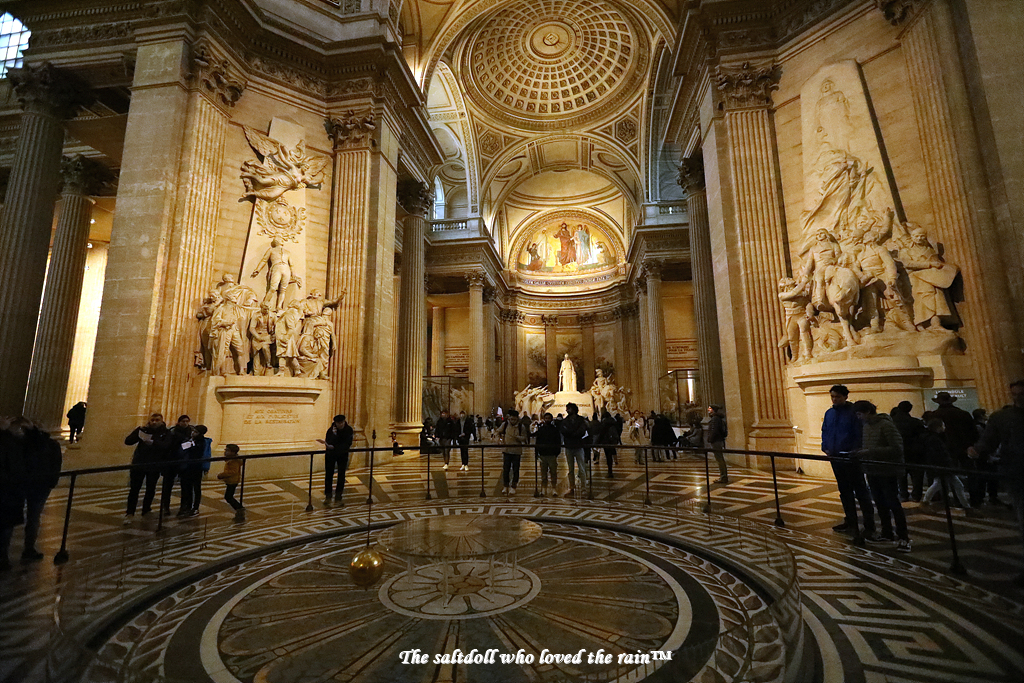

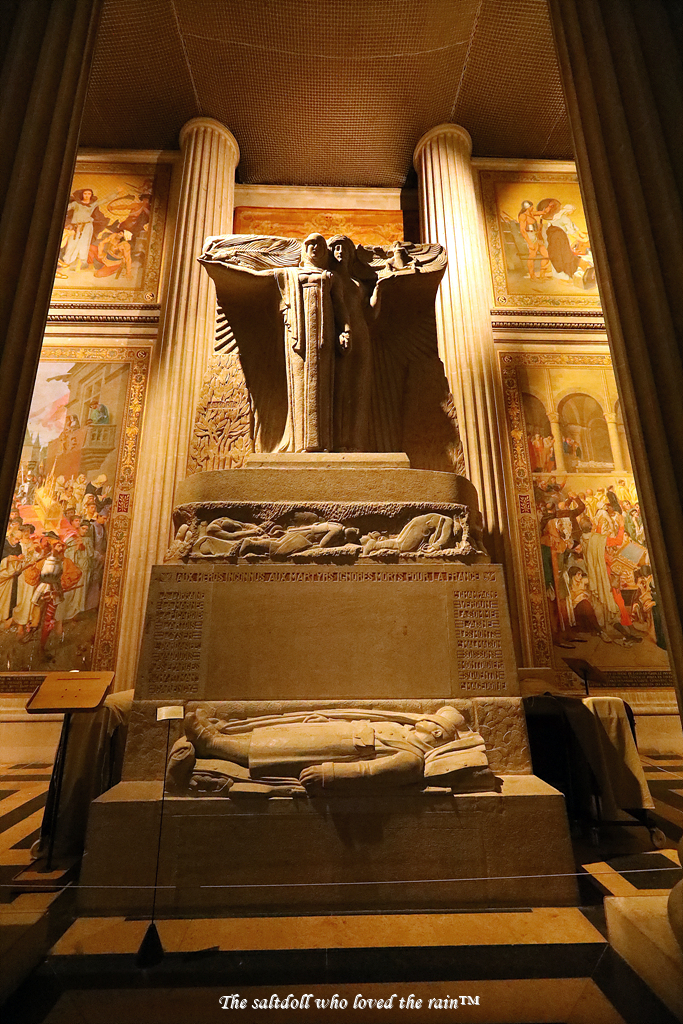
The cellars of the Pantheon are the resting place of many of the celebrities who have graced France.

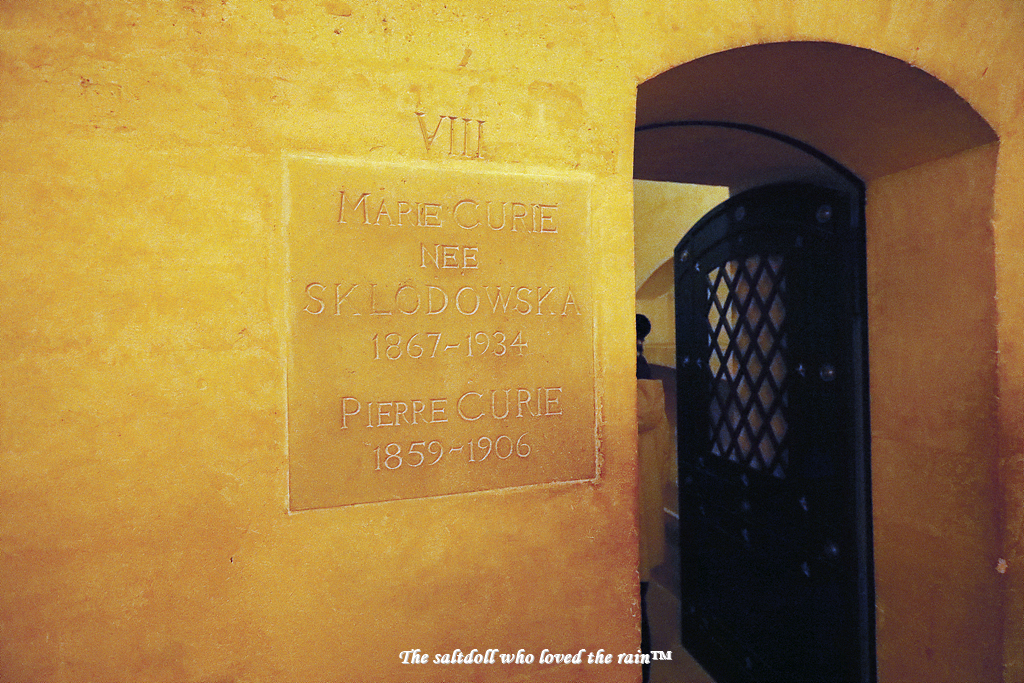
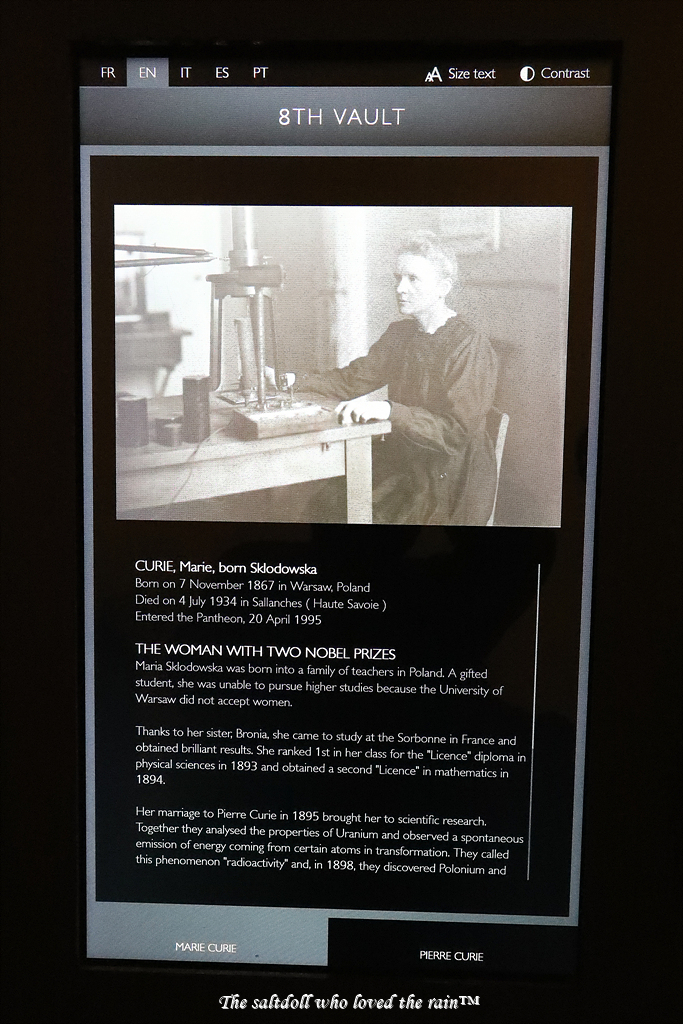
Maria Salomea Skłodowska-Curie (Polish: [ˈmarja salɔˈmɛa skwɔˈdɔfska kʲiˈri]; née Skłodowska; 7 November 1867 – 4 July 1934), known simply as Marie Curie (/ˈkjʊəri/ KURE-ee, French: [maʁi kyʁi]), was a Polish and naturalised-French physicist and chemist who conducted pioneering research on radioactivity. She was the first woman to win a Nobel Prize, the first person to win a Nobel Prize twice, and the only person to win a Nobel Prize in two scientific fields. Her husband, Pierre Curie, was a co-winner of her first Nobel Prize, making them the first-ever married couple to win the Nobel Prize and launching the Curie family legacy of five Nobel Prizes. She was, in 1906, the first woman to become a professor at the University of Paris.
Marie Curie - Wikipedia
Polish-French physicist and chemist (1867–1934) Birthplace of Marie Curie, at 16 Freta Street, in Warsaw, Poland. Maria Salomea Skłodowska-Curie (Polish: [ˈmarja salɔˈmɛa skwɔˈdɔfska kʲiˈri] ⓘ; née Skłodowska; 7 November 1867 – 4 July 19
en.wikipedia.org

Pierre Curie (/ˈkjʊəri/ KURE-ee,[1] French: [pjɛʁ kyʁi]; 15 May 1859 – 19 April 1906) was a French physicist, a pioneer in crystallography, magnetism, piezoelectricity, and radioactivity. In 1903, he received the Nobel Prize in Physics with his wife, Marie Skłodowska–Curie, and Henri Becquerel, "in recognition of the extraordinary services they have rendered by their joint research on the radiation phenomena discovered by Professor Henri Becquerel". With their win, the Curies became the first-ever married couple to win the Nobel Prize, launching the Curie family legacy of five Nobel Prizes.
Pierre Curie - Wikipedia
From Wikipedia, the free encyclopedia French physicist (1859–1906) Pierre Curie ( KURE-ee,[1] French: [pjɛʁ kyʁi]; 15 May 1859 – 19 April 1906) was a French physicist, a pioneer in crystallography, magnetism, piezoelectricity, and radioactivity. In
en.wikipedia.org
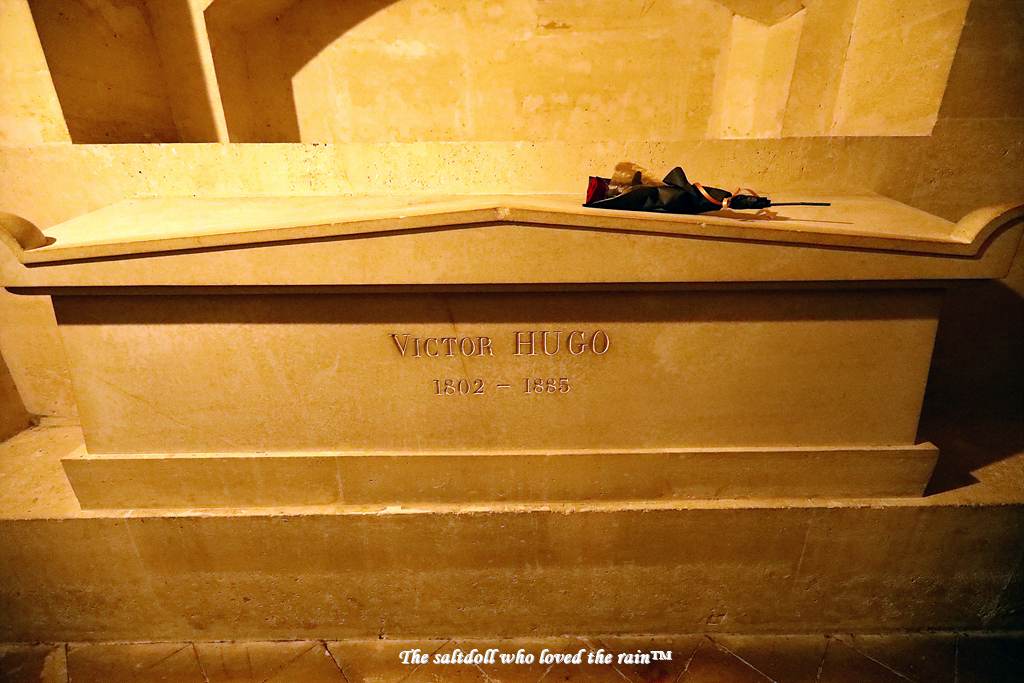


Victor-Marie Hugo (French: [viktɔʁ maʁi yɡo]; 26 February 1802 – 22 May 1885), sometimes nicknamed the Ocean Man, was a French Romantic writer and politician. During a literary career that spanned more than sixty years, he wrote in a variety of genres and forms.
His most famous works are the novels The Hunchback of Notre-Dame (1831) and Les Misérables (1862). In France, Hugo is renowned for his poetry collections, such as Les Contemplations (The Contemplations) and La Légende des siècles (The Legend of the Ages). Hugo was at the forefront of the Romantic literary movement with his play Cromwell and the drama Hernani. Many of his works have inspired music, both during his lifetime and after his death, including the opera Rigoletto and the musicals Les Misérables and Notre-Dame de Paris. He produced more than 4,000 drawings in his lifetime and campaigned for social causes such as the abolition of capital punishment and slavery.
Victor Hugo - Wikipedia
From Wikipedia, the free encyclopedia French novelist, poet, and dramatist (1802–1885) Victor-Marie Hugo (French: [viktɔʁ maʁi yɡo] ⓘ; 26 February 1802 – 22 May 1885), sometimes nicknamed the Ocean Man, was a French Romantic writer and politician
en.wikipedia.org
Thank you for visiting my blog and reading the article.
- Camera : Canon EOS-5D Mark IV
- Lens : Canon EF 16-35L / f2.8